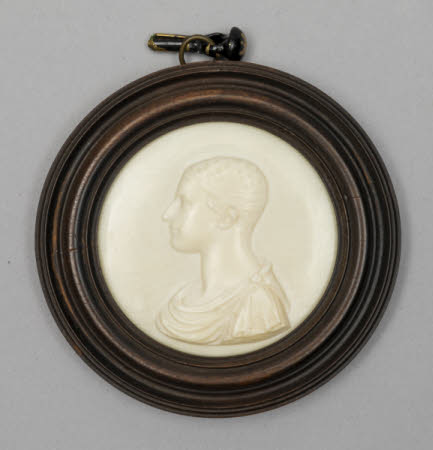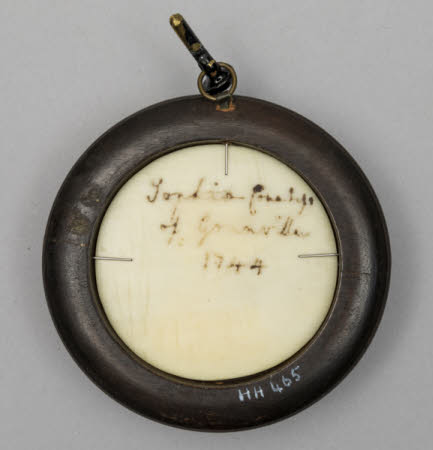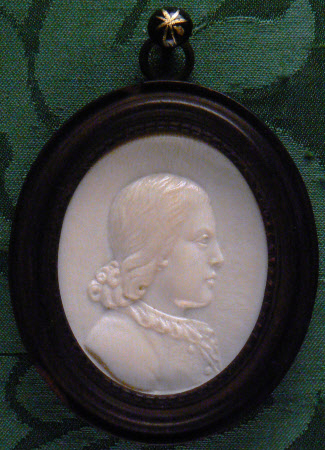Portrait of Wilbraham Tollemache, 6th Earl of Dysart (1739-1821), as a boy.
Category
Art / Sculpture
Date
c. 1740 - 1750
Materials
Ivory, Wood
Measurements
65 mm (H)52 mm (W)
Place of origin
London
Order this imageCollection
Ham House, Surrey
NT 1140225
Summary
Ivory; portrait of Wilbrahim Tollemache, later 6th Earl of Dysart (1739-1821); British;, c. 1740-50. In the form of an oval ivory medallion, the sitter depicted in profile at bust length, facing right. One of five ivory portrait and subject reliefs within a single frame, in the Green Closet of Ham House.
Full description
A portrait of Wilbrahim Tollemache, later 6th Earl of Dysart (1739-1821) in the form of an oval ivory medallion. The subject is shown as a pre-adolescent boy, perhaps about ten years old, dressed in a jacket and with long natural hair, depicted in profile at bust length, facing right. In a dark wood moulded frame, with beading around the inner edge. The second son of the 4th Earl of Dysart and his wife Grace Carteret, the subject of another of the ivory portraits at Ham House (NT1140217), Wilbrahim Tollemache inherited the Earldom on the death of his older brother in 1799. The four portraits of members of the Carteret and Tollemache family are somewhat diverse in their conception; Wilbrahim Tollemache is the most conventional representation, in contemporary dress, whereas his mother Lady Grace Carteret, Countess of Dysart, is depicted in a classicising profile portrait, and Lady Frances Cartaret, later Marchioness of Tweeddale, and Sophia Fermor, Countess of Granville are presented in extraordinarily austere neo-classicising depictions. The group of ivory relief portraits seem to have been intended as intensely private images within the contexts of the families of the sitters. Although the portraits may not all have been made at the same time, they can be dated to the second half of the 1740s. The portrait of Sophia Fermor is likely to date from 1744-45, as she only married Earl Granville in April 1744 and she died just eighteen months later in October 1745, as a result of complications in childbirth. Some of the most original ivory portraits of British sitters at this time were made in Rome, but in the absence of any evidence that the four subjects travelled to Italy, it seems more likely that these ivories were carved in London, perhaps by an immigrant sculptor from Flanders or France. One possible candidate might be the Antwerp-born Gaspar van der Hagen (active 1744-1769), who worked for a time in Michael Rysbrack's workshop and made sculptures in both marble and ivory, specialising in small ivory heads. Jeremy Warren January 2022
Provenance
Presumably the 4th Earl and Countess of Dysart; thence by descent, until acquired in 1948 by HM Government when Sir Lyonel, 4th Bt (1854 – 1952) and Sir Cecil Tollemache, 5th Bt (1886 – 1969) presented Ham House to the National Trust. Entrusted to the care of the Victoria & Albert Museum until 1990, when returned to the care of the National Trust, to which ownership was transferred in 2002.



